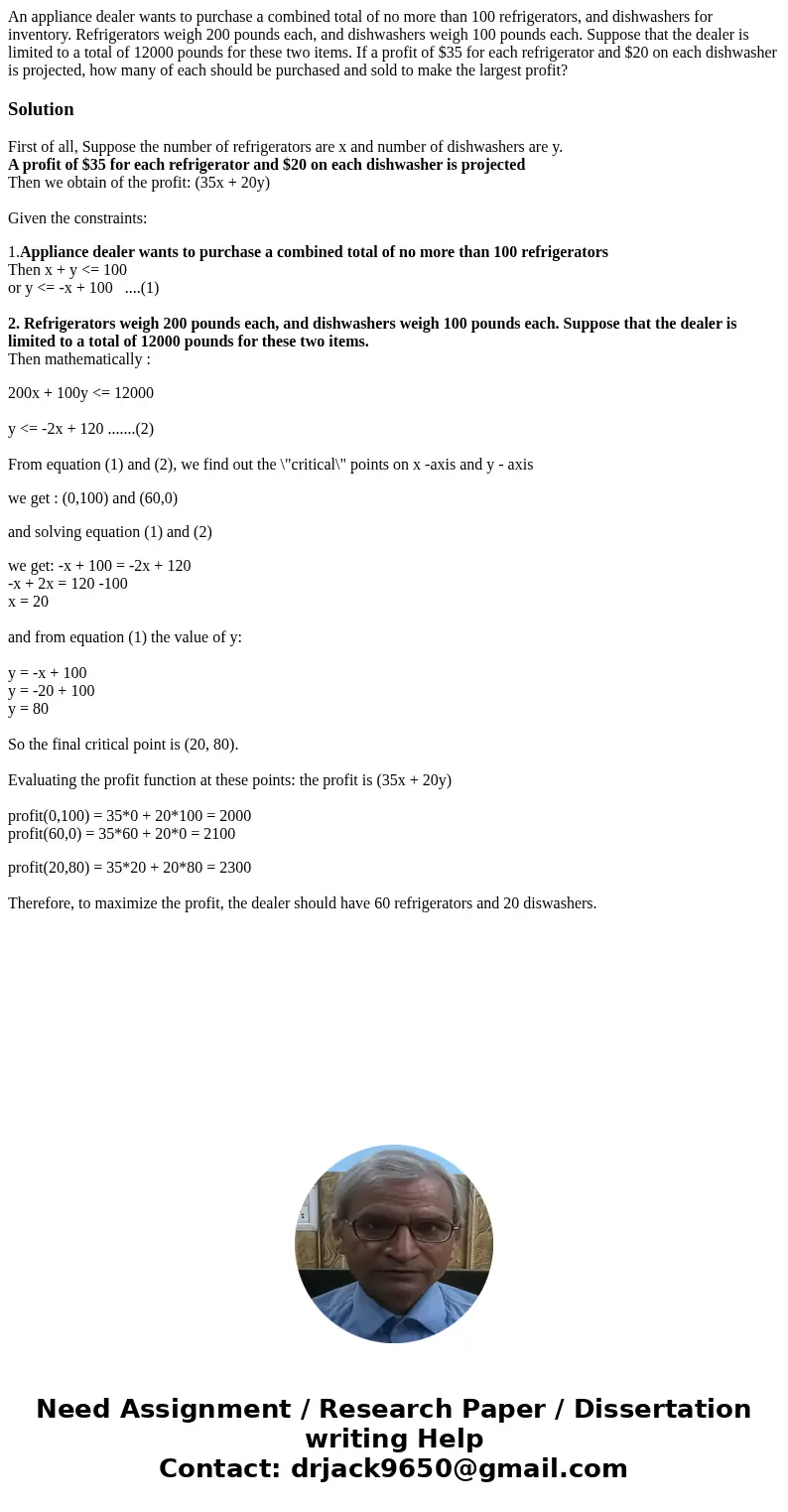An appliance dealer wants to purchase a combined total of no
An appliance dealer wants to purchase a combined total of no more than 100 refrigerators, and dishwashers for inventory. Refrigerators weigh 200 pounds each, and dishwashers weigh 100 pounds each. Suppose that the dealer is limited to a total of 12000 pounds for these two items. If a profit of $35 for each refrigerator and $20 on each dishwasher is projected, how many of each should be purchased and sold to make the largest profit?
Solution
First of all, Suppose the number of refrigerators are x and number of dishwashers are y.
A profit of $35 for each refrigerator and $20 on each dishwasher is projected
Then we obtain of the profit: (35x + 20y)
Given the constraints:
1.Appliance dealer wants to purchase a combined total of no more than 100 refrigerators
Then x + y <= 100
or y <= -x + 100 ....(1)
2. Refrigerators weigh 200 pounds each, and dishwashers weigh 100 pounds each. Suppose that the dealer is limited to a total of 12000 pounds for these two items.
Then mathematically :
200x + 100y <= 12000
y <= -2x + 120 .......(2)
From equation (1) and (2), we find out the \"critical\" points on x -axis and y - axis
we get : (0,100) and (60,0)
and solving equation (1) and (2)
we get: -x + 100 = -2x + 120
-x + 2x = 120 -100
x = 20
and from equation (1) the value of y:
y = -x + 100
y = -20 + 100
y = 80
So the final critical point is (20, 80).
Evaluating the profit function at these points: the profit is (35x + 20y)
profit(0,100) = 35*0 + 20*100 = 2000
profit(60,0) = 35*60 + 20*0 = 2100
profit(20,80) = 35*20 + 20*80 = 2300
Therefore, to maximize the profit, the dealer should have 60 refrigerators and 20 diswashers.

 Homework Sourse
Homework Sourse